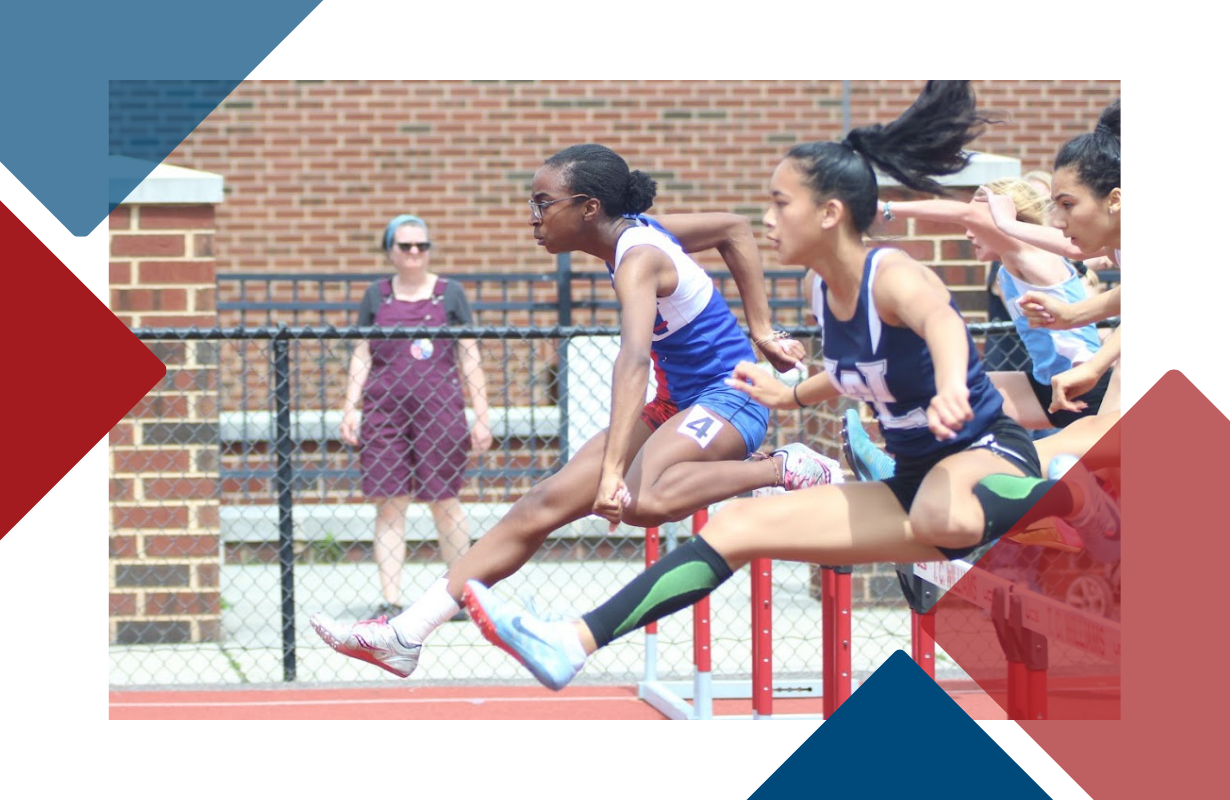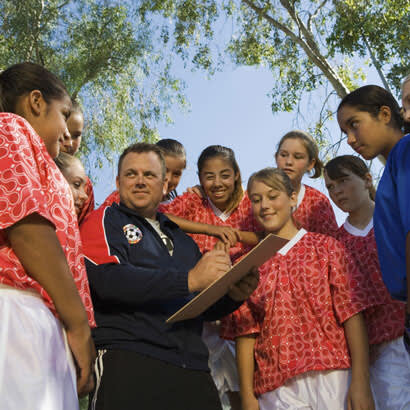As youth sports return in some communities, there’s a greater need than ever for parents to identify the right sports to meet their child’s health needs. Different sports have different benefits, and different children have different needs.
Kids have been missing the physical, social and emotional benefits of playing sports for many months. A new study by the University of Wisconsin found that 65% of adolescent athletes in Wisconsin reported anxiety symptoms in May, with 25% suffering moderate or severe anxiety. Using historical data, the study found the rate of mild to severe depression in youth athletes increased from 31% to 68%. Physical activity was down 50% in May.
First and foremost, any return to play should follow advice from public health experts on whether it’s safe based on local transmission of COVID-19. Phased returns to sports are best. High-contact sports may carry different COVID-19 risks than low-contact sports. The Aspen Institute’s Return to Play risk assessment tool offers guidance on assessing sports based on the risks of contracting and transmitting the virus.
As kids return, there are other health needs to consider when picking sports. How much are athletes moving their bodies in each sport? How are prevalent are injuries by sport? How has playing each sport changed the behaviors of its athletes, such as emotional and social skills, academic motivation, and prevalence of abusing drugs and alcohol?
HOW TO USE THE
HEALTHY SPORT INDEX
The Healthy Sport Index, created by the Aspen Institute in 2018, combines data and expert analysis to identify the relative benefits and risks of participating in the 10 most popular high school boys and girls sports. Parents and youth can use the tool to compare each sport by physical activity, safety and psychosocial benefits, based on how much a person emphasizes each of those three health categories. Users also receive expert advice on other sports that kids can sample to improve their health and skills in their primary sport.
No single experience is the same in youth sports. It’s all about how the sport gets delivered by a coach and organization. But as we start to return to play, there are several key findings from the Healthy Sport Index that can guide the decision-making when parents and youth are selecting sports to try.
Cross country offers the most physical activity
No great surprise here: Cross country is an obvious choice if physical activity is the chief benefit sought from sport participation. The sport finished at the top of our list in that category, for boys and girls. However, beyond that, there is great variation in relative physical activity rates. Research conducted by North Carolina State University showed a majority of boys sports had higher energy expenditure rates than girls at practices. Observations were conducted at 605 varsity sports practices, amounting to 2,420 total athletes being observed with 125,286 recorded individual observations.
| Cross Country | 4.84 | |
| Track and Field | 4.62 | |
| Swimming | 4.11 | |
| Wrestling | 4.11 | |
| Soccer | 4.05 | |
| Lacrosse | 3.82 | |
| Basketball | 3.71 | |
| Football | 3.62 | |
| Tennis | 3.61 | |
| Baseball | 3.02 |
Girls sport scores
| Cross Country | 4.35 | |
| Soccer | 4.23 | |
| Swimming | 4.11 | |
| Volleyball | 3.89 | |
| Lacrosse | 3.53 | |
| Basketball | 3.51 | |
| Tennis | 3.41 | |
| Track and Field | 3.24 | |
| Softball | 2.76 | |
| Competitive Cheerleading | 2.41 |
Standard metabolic equivalents (METs) were calculated by multiplying each observed athlete’s physical activity level with an assigned energy expenditure value: 1.5 for every sedentary athlete, 3.0 for every moderate athlete, and 6.0 for every vigorous athlete. The higher the score, the more vigorous activity existed. If you’re looking for more physical activity in a child’s sport, here's how the most popular sports compare from highest level of physical activity to lowest.
Track and field showed a major gap in physical activity by gender – 60% of boys were observed practicing vigorously, compared to 31% of girls. North Carolina State researchers say this is likely due to how much more time girls track and field athletes spent in activities not intended to be part of practice, such as the transition between drills, break times, changing equipment, getting a drink of water, and telling jokes. Girls track and field athletes spent 30% of their practices in activities not intended to be part of practice, compared to 9% for boys.
Some sports encourage early specialization more than others
Our survey of high school athletes conducted by the University of Texas showed the average age they started specializing in their sport. Many studies show early specialization can lead to overuse injuries and burnout. If you’re looking for sports that are more conducive to multisport sampling, these are the average ages by sport when kids start focusing only on one sport.
Soccer (Boys/Girls), Baseball, Basketball (Boys), Softball
Swimming (Boys/Girls), Competitive Cheerleading
Football, Lacrosse (Boys), Volleyball, Cross Country (Girls), Basketball (Girls)
Cross Country (Boys), Tennis (Boys/Girls), Lacrosse (Girls)
Track and Field (Boys/Girls), Wrestling
Team sports fare better than individual sports in social and emotional benefits
Out of the 10 most popular high school boys sports, football ranked first in our psychosocial survey of 1,290 high school athletes that measured Positive Youth Development. The survey questions focused on personal and social skills, cognitive skills, goal setting skills, initiative skills, health skills and negative experiences.
Team sports fared better in these areas than individual sports such as tennis, track and field, and cross country, which ranked near the bottom for both genders. There seems to be evidence that more traditional team sports may be structured – or, at least, interpreted by the participants – in a manner that produces more concrete experiences associated with well-being.
The results suggest that football, which draws from a lower socioeconomic graphic than most sports and often sits at the center of high school culture, provides a social context that is highly important for some athletes. There is perceived value of football among some youth, even as the sport encounters scrutiny over concussions and the risk of long-term brain injuries.
Football and girls soccer have the most injuries
Not surprisingly, football has the highest overall injury rates, concussion rates and catastrophic injuries/illnesses, according to Healthy Sport Index’s safety analysis report. Research from the National High School Sports-Related Injury Surveillance Study showed that football players were more than twice as likely to have reported concussions than lacrosse, the next closest boys sport.
In North Carolina, the Wake Forest High School football team reported 22 concussions in 2018 while winning a third straight state championship, according to a recent story by the Raleigh News & Observer analyzing concussion data in the state. No other school or sport in the county came close to that number. Several school districts did not provide data, preventing more lessons to be learned on how to potentially reduce concussions in football.
For girls, the Healthy Sport Index found that soccer had the highest overall injury rates and concussion rates. Boys and girls tennis emerged as the safest sports, with very few overall injuries, concussions, time loss due to injuries, surgeries, and catastrophic injuries.
Youth in contact sports showed the riskiest off-field behavior
Healthy Sport Index psychosocial data analyzed by the Women’s Sports Foundation showed that 52% of high school boys lacrosse players reported binge drinking in the previous two weeks; girls lacrosse was 32%. Wrestling (35%) and football (32%) had a high drinking volume, too. The average figure for all male athletes was 28% and for girls 18%.
Football, lacrosse and wrestling also fared among the worst for cutting class, having an average grade of an A or A-, and expecting to graduate from a four-year college. Cross country and track and field showed the least-riskiest options.
The good news: No matter what sports your child plays, benefits exist if the sport is delivered properly. Athletes are more likely to plan to graduate from a four-year college, report higher self-esteem, and disclose less loneliness than their non-athlete peers.
Find the best sport for you at HealthySportIndex.com.






















